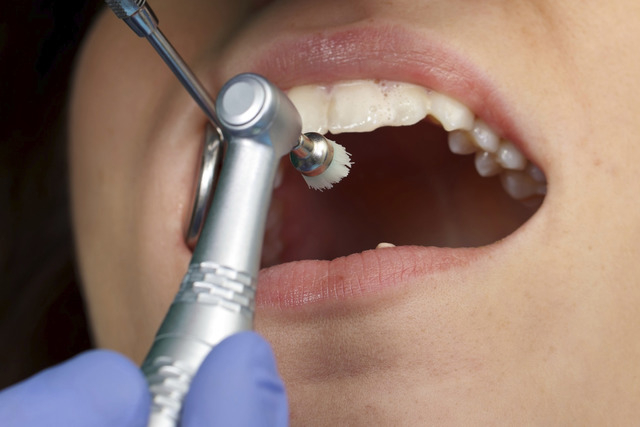Lose a tooth? Here are some dental options
Losing a tooth used to mean wearing a denture or just living with a fewer-than-usual complement of teeth. Later, fixed bridges became the most common lost-tooth fix, and, more recently, dental implants have come to offer a more high-tech solution.
However, implants may not be the best tooth restoration choice for everybody, and bridges versus implants? The answer is about more than just comparative costs.
Dr. R. Michael Sanders, professor and chairman of clinical sciences at the University of Nevada, Las Vegas School of Dental Medicine, notes that implant technology, materials and procedures have evolved considerably during the past several decades.
“The real revolutions came in the late ’70s and emerging into the ’80s when we developed what are called root-form implants,” he says.
In root-form implants, a cylinderlike implant is placed into the jaw’s bone. Eventually, bone will grow into the implant, Sanders says, and later will be used to support a crown, bridge or other restoration.
“(Implants) need to be maintained and cleaned, just like a regular tooth,” Sanders adds, but, if properly placed, an implant “will stay in there a heck of a long time and can provide an enormous amount of strength and support.”
A fixed bridge, in contrast, consists of a false tooth anchored to two adjoining teeth. Because a bridge requires reshaping what may be two otherwise healthy teeth, implants have become the treatment of choice for single lost teeth.
Among the issues a dentist will consider in recommending one over the other will be the condition of adjacent teeth.
“(A bridge) is really predicated on the viability of the adjacent tooth to support an artificial tooth connected to them,” Sanders says.
For example, he says, if the teeth are diseased and have decay down to the gum line, that’s not a good one you can build a crown on.
Meanwhile, he adds, “you need certain dimensions laterally and vertically to put an implant in. You must have a certain amount of bone (for the post) to grow into.”
The jaw’s physical dimensions can make implants a less-than-suitable option, Sanders says. And if bone loss has occurred, a bone graft might be needed even before an implant can be placed.
In offering treatment options to a patient, the dentist also will consider the patient’s bite and whether he or she is a grinder or a clencher.
Implants, he says, handle up-and-down forces well, but don’t handle side-to-side forces well.
“I have seen implants in acute grinders break, and they’re really strong,” Sanders says. “We’re talking titanium here.”
To determine your own best option, talk with your dentist. However, Sanders suspects that implants increasingly will become the option of choice for more and more patients.
“The techniques of being able to replace missing bone and make implants more viable, those are evolving,” he says, “and I think we’ll see implants becoming more and more popular and a reasonable thing to do.”




























